Subtotal: AED2,228.70
Huawei switch with 8-ports 1000BASE-T, 4-ports GE SFP, 2x1000BASE-T combo, 1 AC power fixed S5720S-12TP-LI-AC
10 in stock
AED1,299.00
10 in stock
Huawei S5720-12TP-LI-AC switch with 8-ports 1000BASE-T, 4-ports GE SFP, 2x1000BASE-T combo, 1 AC power fixed
Overview
Huawei S5720-12TP-LI-AC switch with 8-ports 1000BASE-T, 4-ports GE SFP, 2-ports 1000BASE-T combo
With 1 AC power fixed
No extension slots
Forwarding perfomance: 22.5Mpps
Switching capacity: 336Gbps
16K MAC address entries
Non-POE
The S5720-LI is a next-generation energy-saving gigabit Ethernet switch that provides flexible GE access ports and 10GE uplink ports. Building on next-generation, high-performance hardware and the Huawei Versatile Routing Platform (VRP), the S5720S-LI supports intelligent stack (iStack), flexible Ethernet networking, and diversified security control. It provides customers with a green, easy-to-manage, easy-to-expand, and cost-effective gigabit to the desktop solution. In addition, Huawei customizes specialized models to meet customer requirements to suit special scenarios.The models with front power sockets can be installed in the 300 mm deep cabinet. They can be maintained through the front panel, saving space in small equipment rooms. The models that use a fan-free design reduce power consumption and noise.
Tech Specs
| Item | Description |
| Fixed port | 24 Ethernet 10/100/1000 ports, 4 of which are dual-purpose 10/100/1000 or SFP P series: 4 Gig SFP X series: 4 10 Gig SFP+ |
| Forwarding performance | 22.5 Mpps |
| Extended slot | NA |
| MAC address table | IEEE 802.1d |
| 16K MAC address entries | |
| MAC address learning and aging | |
| Static, dynamic, and blackhole MAC address entries | |
| Packet filtering based on source MAC addresses | |
| VLAN | 4K VLANs |
| Guest VLAN and voice VLAN | |
| GVRP | |
| MUX VLAN | |
| VLAN assignment based on MAC addresses, protocols, IP subnets, policies, and ports | |
| 1:1 and N:1 VLAN Mapping | |
| Wireless AC | AP access control, AP domain management, and AP configuration template management Radio management, unified static configuration, and dynamic centralized management WLAN basic services, QoS, security, and user management CAPWAP, Tag/terminal location, and spectrum analysis |
| Jumbo frame | 10K |
| IP routing | Static routes, RIP v1/2, RIPng, OSPF, OSPFv3, IS-IS, IS-ISv6, BGP, BGP4+, ECMP, routing policy |
| IPv6 features | Neighbor Discovery (ND) |
| Path maximum transmission unit (PMTU) | |
| IPv6 Ping, IPv6 Tracert, and IPv6 Telnet | |
| 6 to4 tunnel, ISATAP tunnel, and manually configured tunnel | |
| ACLs based on source IPv6 addresses, destination IPv6 addresses, Layer 4 ports or protocol types |
|
| Multicast Listener Discovery (MLD) v1/v2 snooping | |
| Multicast forwarding | IGMP v1/v2/v3 snooping and IGMP fast leave |
| Multicast forwarding in a VLAN and multicast replication between VLANs | |
| Multicast load balancing among member ports of a trunk | |
| Controllable multicast | |
| Port-based multicast traffic statistics collection | |
| IGMPv1/v2/v3, Protocol Independent Multicast Sparse Mode (PIM-SM), and Protocol Independent | |
| Multicast Dense Mode (PIM-DM), and Protocol Independent Multicast Source-Specific Multicast (PIM-SSM) | |
| Multicast Source Discovery Protocol (MSDP) | |
| QoS/ACL | Rate limitation in the inbound and outbound directions of a port |
| Packet redirection | |
| Broadcast storm control | |
| Port-based traffic policing and two-rate and three-color CAR | |
| Eight queues per port,Weighted round robin (WRR), deficit round robin (DRR), strict priority (SP), WRR+SP, and DRR+SP queue scheduling algorithms | |
| Weighted random early detection (WRED) | |
| Re-marking of the 802.1p priority and DSCP fields of packets | |
| Packet filtering on Layer 2 to Layer 4, filtering out invalid fr ames based on the source MAC address, destination MAC address, source IP address, destination IP address, TCP/UDP source/destination port number, protocol number, or VLAN |
|
| Queue-based rate limitation and shaping on ports | |
| HQoS | |
| Security features | Hierarchical user management and password protection |
| DoS attack defense, ARP attack defense, and ICMP attack defense | |
| Binding of the IP address, MAC address, interface number, and VLAN ID of a user | |
| Port isolation, port security, and sticky MAC | |
| MAC Forced Forwarding (MFF) | |
| Blackhole MAC address entries | |
| Limit on the number of learned MAC addresses | |
| IEEE 802.1x authentication and the limit on the number of users on an interface | |
| AAA authentication, RADIUS authentication, HWTACACS+ authentication, and NAC SSH v2.0 |
|
| Hypertext Transfer Protocol Secure (HTTPS) | |
| CPU defense; Blacklist and whitelist; MACSec ready | |
| Reliability | RRPP ring topology and RRPP multi-instance |
| Smart Link tree topology and Smart Link multi-instance, providing the millisecond-level protection switchover |
|
| SEP | |
| G.8032 Ethernet Ring Protection Switching (ERPS) | |
| STP (IEEE 802.1d), RSTP (IEEE 802.1w), and MSTP (IEEE 802.1s) | |
| BPDU protection, root protection, and loop protection | |
| Super Virtual Fabric (SVF) | Working as the parent node to vertically virtualize downlink switches and APs as one device for management |
| Supports a two-layer client architecture | |
| Management and Maintenance |
Virtual cable test, SNMP v1/v2c/v3, RMON |
| Network management system (NMS) and Web management | |
| System logs and multi-level alarms | |
| 802.3az EEE | |
| GVRP | |
| Dying Gasp upon power-off | |
| Interoperability | VLAN-Based Spanning Tree (VBST), working with PVST, PVST+, and RPVST |
| Link-type Negotiation Protocol (LNP), similar with DTP | |
| VLAN Central Management Protocol (VCMP), similar with VTP | |
| Operating environment | Operating temperature: 0-1800 m altitude: 0-45℃ 1800-5000m altitude: The operating temperature reduces by 1℃ every time the altitude increases by 220m. Relative humidity: 5% to 95% (noncondensing) |
| Input voltage | AC: Rated voltage range: 100 V to 240 V AC, 50/60 Hz Maximum voltage range: 90 V to 264 V AC, 50/60 Hz DC:Rated voltage range: –48 V to –60 V, DC Maximum voltage range: –36 V to –72 V, DC |
| Dimensions (mm) | 442 (W) x 420 (D)x 43.6 (H) |
| Typical power consumption | 21.2W |
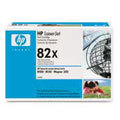 HP LaserJet 8100/8150 series C4182X Black Print Cartridge
HP LaserJet 8100/8150 series C4182X Black Print Cartridge 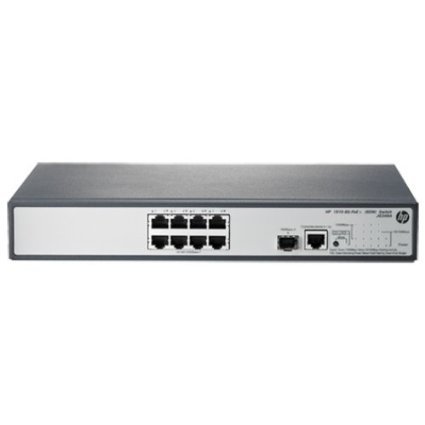 HP 1910-8G-PoE+ JG349AS#ABA (65W) Switch
HP 1910-8G-PoE+ JG349AS#ABA (65W) Switch  04 3550600
04 3550600 052 7036860
052 7036860

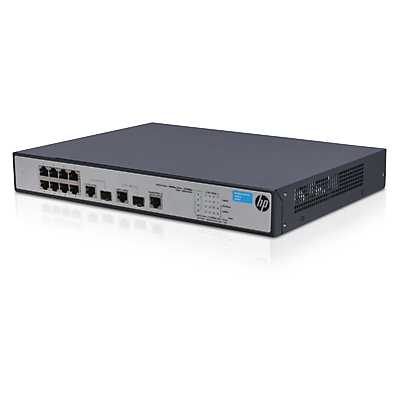
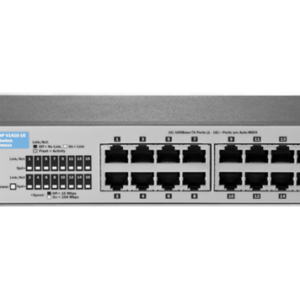
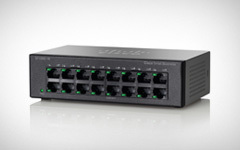

There are no reviews yet.